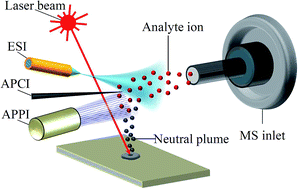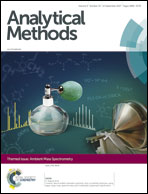Laser-based ambient mass spectrometry
Abstract
Laser has been an important tool in mass spectrometry due to its multifunctional capability of desorption and ionization. However, the ionization efficiency by irradiating laser beams on a sample, as described using laser desorption (LD), laser ablation (LA) and laser-induced acoustic desorption (LIAD), is always low. The dominance of neutrals generated by laser-based techniques necessitated the integration of ion sources to enhance the yield of analyte ions. Therefore, laser was combined with atmospheric pressure ionization (API) techniques such as electrospray ionization (ESI), atmospheric pressure chemical ionization (APCI), and atmospheric pressure photoionization (APPI) to directly characterize chemical and biological compounds. These laser-based MS techniques are performed under ambient conditions and highlight the benefits of direct analysis such as the avoidance of sample preparation, rapid sample switching, high-throughput analysis, and high spatial resolution. As a result, these techniques have been utilized to characterize solid and liquid samples such as dried spots, biological fluids, questionable documents, counterfeit banknotes, plant and animal tissues, drug tablets, petroleum products, and thin-layer chromatography plates. Herein, we reviewed laser-based ambient mass spectrometric (AMS) techniques with regard to their fundamentals, ionization mechanisms, and recent applications.

- This article is part of the themed collection: Ambient Mass Spectrometry


 Please wait while we load your content...
Please wait while we load your content...